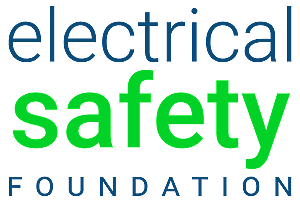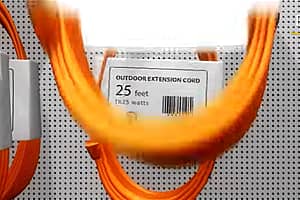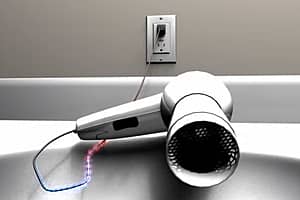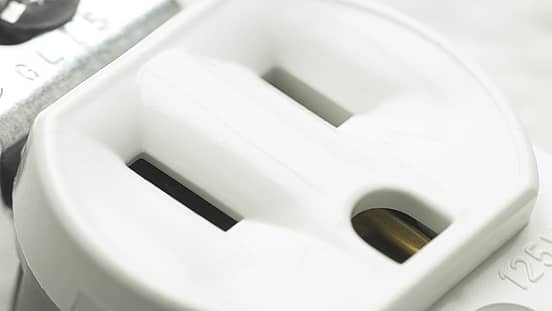Introduction
Electricity plays an essential role in how your home operates. Whether watching TV, powering heating and cooling systems, or charging a cell phone, we rely on our home’s electrical system to provide us with power when and where we need it.
By understanding the basics of how electricity is distributed around your home, you can keep this important system properly maintained and in safe working condition:
Electricity enters your home through a service head from a series of outdoor power lines or an underground connection. A typical service head consists of two 120-volt wires and one neutral wire that deliver power to lights and appliances around the home.
The 120-volt circuits use one phase of the electrical service to power standard home appliances. However, certain larger appliances such as water heaters, electric rangers, or clothes dryers require a 240-volt circuit, which is created using both 120-volt wires and the neutral wire.
The electric meter is mounted outdoors where electricity enters your home. This device is used to measure the amount of electricity that is consumed in your home. The meter is monitored by your electric utility company and is protected by law—tampering with it is both extremely dangerous and illegal.
The electrical service panel is the central distribution point for delivering electricity to switches, outlets, and appliances throughout the house. Located near the electric meter, the service panel is equipped with breakers or fuses that shut off power to the circuits if an electrical system failure occurs.
Grounding is the method used to connect an electrical system to the earth with a wire. Grounding adds critical protection against electric shock and electrocution by using a grounding rod to provide a third path for conducting electricity in the event of a short circuit or an overload. Grounding will help protect the person working on the system, the system itself, and any appliances and equipment that are connected to the system.
Watch the Home Electrical System Safety Video (or Seguridad del sistema eléctrico de la casa) for a visual introduction to your home electrical system. You can also visit the Virtual Home for an interactive tour of a basic electrical system and the electrical devices commonly found in modern homes.
Electrical Service Panel
Every home has a service panel that distributes electricity to switches, outlets, and appliances. The service panel is usually found in the basement, garage, or utility area.
When a short or overload shuts down power to a circuit, this is where you can restore the flow. It is also where you will shut down power to a circuit before starting a project or repair.
Fuses and Circuit Breakers
All service panels are equipped with fuses or circuit breakers that protect the wires in each circuit from overheating and causing a fire. In general, older service panels use fuses, while more modern systems rely on circuit breakers.
Fuses and circuit breakers are safety devices that help prevent overloading of your home electrical system and prevent fires. They stop the electrical current if it exceeds the safe level for some portion of your home electrical system.
Fuses
Service panels installed before 1965 use fuses to protect each individual circuit. Early fuses were commonly used in 30- and 60-amp service panels. Today, new homes require 100- to 200-amp service panels in order to provide proper protection.
There are several different types of fuses, and picking the right one may seem confusing at first. Each fuse is marked with a code, which provides information about the type of base and the degree of time delay, if any.
Instructions for Replacing Fuses:
Once a fuse is blown, it must be unscrewed and thrown away. When replacing fuses in your service panel:
- Always make sure that the replacement fuse matches the amperage rating of the circuit.
- Never replace a fuse with one that has a larger amperage rating. This is a very dangerous practice and a serious fire hazard.
Circuit Breakers
All newer homes are protected by circuit breakers. Unlike a fuse that must be replaced when it blows, a circuit breaker that has “tripped” can be mechanically reset to resume operations once the problem has been resolved. A tripped breaker is likely the result of too many appliances overloading the circuit and should be fixed immediately.
Instructions for Resetting a Tripped Breaker:
- Unplug or turn off appliances in the room.
- Find your main breaker panel and open the cover.
- Locate the tripped breaker or blown fuse. A tripped circuit breaker will be in the off position or in a middle position between on and off.
- To reset the breaker switch it to off position and then back to on. This may restore power to the room. If the problem continues, there may be more serious issues. Contact an electrician to diagnose the problem.
Arc Fault Circuit Interrupters (AFCIs)
AFCIs are new protective devices that replace standard circuit breakers in the electric service panel. AFCIs provide enhanced protection against additional fire hazards known as arc faults. An arc fault is a dangerous electrical problem caused by damaged, overheated, or stressed electrical wiring or devices. Without AFCIs, arc faults may be hidden from plain view until it is too late.
The U.S. Department of Housing and Urban Development’s Healthy Homes Report listed the absence of AFCIs among the primary residential hazards associated with burns and fire-related injuries.
In fact, these devices are so effective that the National Electrical Code has required that they be used to protect almost every circuit in the home since 2008.
Home Wiring System
More than 30 million homes, or about one-third of the homes in the United States are at least 50 years old, and studies have shown that the frequency of fires in these aging homes is disproportionately high. Many older homes were built with electrical systems and components which are no longer safe and may be considered as fire hazards.
Fire and other electrical safety concerns may arise due to aging, improper installation and alteration, or misuse. It is important to identify what type, color, and size wire is needed in order to properly address hazardous situations before they become critical.
Knob & Tube Wiring: 1800s–1930s
Knob and tube wiring was designed as an open air system that used ceramic knobs to separate wires from combustible framing. These suspended wires were directed through ceramic tubes to prevent contact with the wood framing and starting a fire. Today, knob and tube wiring is considered a fire hazard because it is not a grounded system, and is more susceptible to damage from aging and faulty renovations.
Aluminum Wiring: 1960s through 1970s
As the price of copper soared in the 1960s, it became commonplace for home electrical wires to be made using aluminum instead of copper. It is estimated that nearly two million homes were wired with aluminum between 1962 and 1972.
Many receptacles and switches manufactured during this time were not intended for use with aluminum wire. This inadequate equipment, combined with poor installation practices, resulted in loose electrical connections, which pose a potential fire hazard.
The best way to determine whether a home has aluminum wiring is to hire a licensed, qualified electrician, but it may also be possible to identify an aluminum-wired system by checking the cables that run through the basement or attic to see if the cable is labeled “AL” or Aluminum.
If your home has aluminum wiring that was installed in the 1960s or 70s, have a licensed, qualified electrician verify that all connections are properly made using wiring devices and other equipment that have been certified for use with aluminum wire.
Homes built today may have aluminum alloy wire used for the service entrance conductors and large appliances. Provided the connections, circuit breakers and devices are all marked with the letters “AL”, these types of installations are acceptable when installed in accordance with the National Electrical Code.
Grounded Electrical Systems: 1940s through Present
Electricity always seeks to return to its source and complete a continuous circuit. A typical circuit in your home has two conductors: hot and neutral. Electricity travels from the service panel to home appliances through the hot conductor, and returns the current to the main service panel through the neutral conductor. A third or “grounding” wire is also connected to all outlets and metal boxes in your home.
This critical safety feature is designed to greatly reduce your chance of shock or electrocution should a short circuit occur. Grounding wires are connected directly to the earth through a metal grounding rod or a cold water pipe. Should a short circuit or an overload occur, any extra electricity will find its way along the grounding wire to the earth.
Electrical Outlets and Receptacles
Electrical outlets are the place where you are most likely to interact with your home’s electrical system on a daily basis.
Polarized & Grounded Outlets: 1920s – Present
Since 1920, most homes have been outfitted with polarized outlets that feature two vertical slots of different sizes. These outlets are designed so that the slot for the neutral wire is wider than the slot for the hot wire, making it difficult to insert an electrical plug the wrong way. When used with a polarized plug, these outlets provide protection by keeping electrical current directed.
Grounded outlets have a round hole for the grounding conductor in addition to the two vertical slots. The circle slot is connected to a ground wire. Grounded outlets are required to be installed in all modern homes today. If your home does not have grounded outlets, then your electrical system is likely missing critical safety features. Consult an electrician about updating your home.
Tamper Resistant Receptacles (TRRs)
Each year, approximately 2,400 children suffer severe shock and burns when they stick items into the slots of electrical receptacles. It is estimated that there are six to 12 child fatalities a year related to this. Tamper resistant receptacles (TRRs) look like standard wall outlets, but they feature an internal shutter mechanism which prevents children from sticking objects like hairpins, keys, and paperclips into the receptacle.
This spring-loaded shutter system in a TRR outlet only opens when equal pressure is applied simultaneously to both shutters, such as when an electrical plug is inserted. Unlike plastic outlet covers, TRRs provide automatic and continuous protection for children.
While hospitals have required TRRs for decades, the 2008 edition of the National Electrical Code mandated that these specialized outlets be installed in new home construction.
Ground Fault Circuit Interrupters (GFCIs)
Since the 1970s, ground fault circuit interrupters (GFCIs) have saved thousands of lives and have helped cut the number of home electrocutions in half.
GFCIs are electrical safety devices that trip electrical circuits when they detect ground faults or leakage currents. A person who becomes part of a path for leakage current will be severely shocked or electrocuted. These outlets prevent deadly shock by quickly shutting off power to the circuit if the electricity flowing into the circuit differs by even a slight amount from that returning.
A GFCI should be used in any indoor or outdoor area where water may come into contact with electrical products. The 2008 edition of the National Electrical Code currently requires that GFCIs be used in all kitchens, bathrooms, garages, and outdoors. GFCIs should be tested once a month to confirm that they are working properly.
Extension Cords
Extension cords are a convenient way to provide power right where you need it when working in or around your home, but they using them improperly can be dangerous – even deadly. Keep safety in mind with these easy tips from ESFI.
Extension Cord Safety Tips:
- Extension cords should only be used on a temporary basis.
- Make sure extension cords are properly rated for their intended use, indoor or outdoor, and meet or exceed the power needs of the appliance or device being used.
- Inspect cords for damage before use. Check for cracked or frayed plugs, loose or bare wires, and loose connections.
- Never use a cord that feels hot or is damaged in any way.
- Do not run extension cords through walls or ceilings. This may cause the cord to overheat, creating a serious fire hazard.
- Do not nail or staple electrical cords to walls or baseboards.
- Make sure that cords are not pinched in doors, windows, or under heavy furniture, which could damage the cord’s insulation.
- Keep extension cords out of high-traffic areas like doorways or walkways where they pose a tripping hazard.
- Insert plugs fully so that no part of the prongs is exposed when the extension cord is in use.
Ensure that all extension cords are certified by a nationally recognized testing laboratory such as UL, CSA, or ETL, and read the manufacturer’s instructions.
Outdoor Extension Cord Safety Tips:
- When working outdoors, use only weather-resistant heavy gauge extension cords marked “for outdoor use.” These weather resistant cords have the added safeguard of a protective coating designed to withstand the rougher outdoor environment and to prevent water from seeping in.
- Be sure amperage ratings for outdoor extension cords are higher than those of the electrical product with which they are used.
- Keep cords out of your path or work area. Throw the cord over your shoulder.
- Be sure to examine cords before each use. Damaged cords should be replaced immediately.
- Remember that extension cords are for short term needs and not for long term power solutions. Never alter or tamper with an extension cord in anyway.
View the Extension Cord Safety Virtual Demonstration for more information. This video is also available in Spanish.







